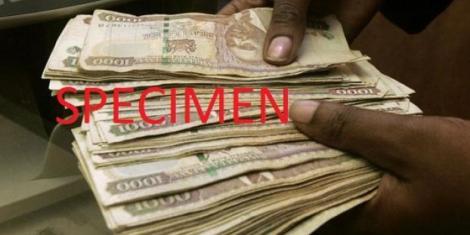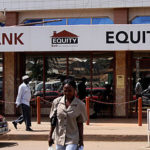|
Within a month after Central Bank of Kenya (CBK) Governor Patrick Njoroge announced plans to phase out the old KSh1, 000 banknotes, a massive Sh25 billion resurfaced into circulation. This saw money outside of banks — in coins and notes — reduce by nearly one-tenth from KSh222 billion to KSh196 billion, according to the latest data from the CBK. The unusual 9.8 per cent drop in money outside of banks is the first negative annual growth since CBK started making this data public in 2015. The financial regulator acknowledges that some of the KSh196 billion could be money that Kenyans are using to buy goods and services with some in people’s pockets, but a good chunk of it could also be dirty money that has been kept out of circulation. In his Madaraka Day Speech on June 1, Dr Njoroge noted that his team has since reached the conclusion that the KSh1, 000 notes were being used for illicit financial flows in the country and region. “To deal conclusively with these concerns, all the older one thousand shillings series shall be withdrawn. By a Gazette Notice dated May 31, 2019, all persons have until October 1, 2019, to exchange those notes, after which the older one thousand shillings banknotes will cease to be legal tender,” said Dr Njoroge. Thirty days after he had made the speech, currency outside of banks dropped by almost a tenth in what is a pointer to desperation by Kenyans — some who had hidden their hard-earned and for some, illicit money in their homes — to beat the September 30 deadline. The other banknotes KSh50, Kh100, KSh200 and KSh500 old notes, will, however, remain as legal tender despite new currency being introduced under these lots. The introduction of the new currency has generated mixed reactions even as some opposed because of the sculpture of the country’s first president, which they have insisted is a portrait, contrary to the constitutional requirement that no person’s photo should feature in the new generation currency. Return of the cash into banks is given credence by a corresponding jump of money in bank accounts which increased by KSh22 billion. With the foreign currency deposits also experiencing a huge jump, it could explain where the missing Sh3 billion could have gone. It is going to be interesting to see what the July and August data, which is yet to be compiled, will reveal even as CBK governor goes on a campaign trail urging Kenyans to return the old KSh1,000 notes for replacement. There are 40 days left to the deadline, and CBK officials are on the look-out how much of the cash ‘hidden under mattresses’ will be returned. Reginald Kadzutu, a financial analyst, agreed that this is a strong indication that people are trying to beat the September 30 deadline. Mr Kadzutu noted that while the money might now be available for use by consumers, there are also fears of a spike in prices of goods and service in the coming months as Kenyans rush to spend this excess cash. “This money is now clean money and people might try to be prudent in using it, so they will buy assets,” said Kadzutu. Analysts widely blame idle cash for the slowdown in the economy, with most companies being forced to cut on production costs by laying off workers. The governor has insisted that the deadline will not be extended, warning those who will be left with the KSh1, 000 that they will have been left with nothing but “pieces of paper.” As of June 2018, there were 201 million pieces of KSh1, 000 notes, which translates to Sh201 billion. This means the KSh1, 000 notes constitute 90 per cent of the cash outside currently outside of the banking system. The injection of KSh25 billion into bank accounts coincided with the payment of pending bills by Government, reported to be around Sh10 billion. The excess cash might have contributed to the weakening of the local currency as traders, finding themselves with a lot of money, rushed to forex bureaus to buy US dollars which they could use to buy goods from the world market. Njoroge has, however, has denied any links between the return of the old banknotes and weakening of the shilling.
|
Kenyans return KSh25b hidden in old bank notes







